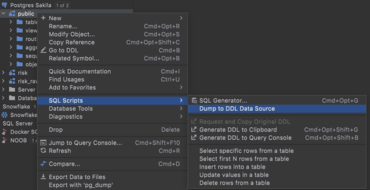Proveedor oficial
Como distribuidores oficiales y autorizados, le suministramos licencias legítimas directamente de más de 200 editores de software.
Ver todas nuestras marcas.

Una base de datos IDE adaptada a las necesidades específicas de desarrolladores SQL profesionales y DBA.
Chatee en vivo ahora mismo con nuestros especialistas en licencias de JetBrains.